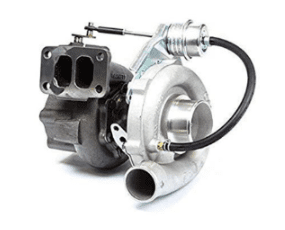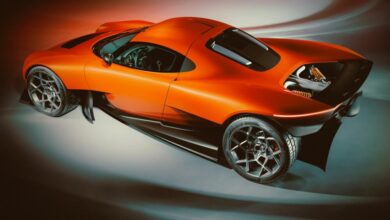An Expert Guide to Turbochargers vs Superchargers for Peak Performance

Turbochargers and superchargers significantly boost horsepower by cramming combustion chambers with excess air beyond natural induction. Forcing higher pressures/temperatures upon ignition via greater induction enables improved torque and output. Understanding the difference between turbochargers and superchargers is pivotal. It helps maximize boosted engines’ performance potential.
What Are Turbochargers?

Turbochargers work via exhaust gas energy. It contains a turbine placed in the exhaust stream. As exhaust gases flow by, they spin the turbine. A shaft then connects this to a compressor, which forces more air into the engine. This allows boosted power even at low RPMs. Turbocharging is quite popular today. Many sports cars and trucks use this technology.
What Are Superchargers?
Superchargers instead use a belt connected to the crankshaft to derive power. As the engine turns, it spins an attached compressor. The compressor then squishes more air into the intake. Roots-style and centrifugal designs are common. The boost response is a key difference between a turbocharger and a supercharger. Superchargers were popular in the past for high-end performance. Some vehicles nowadays still favor superchargers for instant boost response.
Turbocharger vs Supercharger: A Detailed Comparison
While both provide forced induction, they have key inherent differences. The following table reveals the difference between turbochargers and superchargers:
| Parameter | Turbocharger | Supercharger |
| Power Source | Exhaust gases spin the turbine wheel, which is connected to the compressor via a shaft. | A belt connects the supercharger directly to the crankshaft, drawing power from the engine. |
| Increased Horsepower | 25%-40% | 30%-50% |
| Boost Response | Boost is slow to develop as the turbine spins up due to exhaust spool time | Boost is instantaneous as engine RPM rises, with maximum pressure attained quicker |
| Noise | Turbine whine is generally quieter than exhaust during operation | The distinctive whine grows louder with RPM due to the open drive connection |
| Complexity | Includes turbine, shaft, bearings – more failure prone over time | Self-contained design is mechanically simpler with fewer failure points |
| Maintenance | Require more routine maintenance due to more parts | Less maintenance |
| Fuel Economy | More thermally efficient design allows for improved fuel economy | The mechanical linkage is less efficient, using more fuel for the same power output |
| Application | Automotive engines, aircraft engines, diesel engines. | Commonly found in high-strung sports/race applications, preferring quick spool. |
Cost Analysis: Supercharger Vs Turbocharger Price
Cost is a major difference between turbochargers and superchargers. Superchargers generally carry a higher price tag than turbochargers. A basic supercharger kit can cost $2,000-$3,000 to install, while comparable turbocharger systems cost at least $1,500. Costs may vary based on several factors, e.g. efficiency, noise, boost response, how much a turbocharger adds horsepower, etc. However, when considering the cost-effectiveness, turbochargers generally offer a more economical solution.
Why is the Turbocharger More Popular?
Turbocharging technology has advanced significantly. This advancement is the primary difference between turbochargers and superchargers. Features and designs that were once weaknesses, like turbo lag, have made great process. Turbocharger popularity has surged because of these reasons:
ü Turbocharger lag is greatly improved. Newer turbo designs have made significant progress in reducing turbo lag, such as using smaller turbos that can spool up faster and implementing parallel or sequential turbocharger setups with two turbos of different sizes.
ü Aftermarket support is widespread. Affordable bolt-on turbo kits exist for most makes and models, satisfying more owners.
ü Manufacturers favor them. OEMs see turbos as a solution for desired power while meeting fuel efficiency standards.
ü Emissions regulations. Turbocharged engines allow advanced emissions equipment and still excite drivers.
ü Reliability matches superchargers. Today’s turbo systems are on par or better than past reliability concerns. The reliability difference between turbochargers and superchargers has become minimal.
Please also read Be an Informed Buyer: FAQs on Construction Machinery Parts Explained.
Please also read The Complete Guide to Professional-Grade Heavy Equipment Parts Replacement.
Conclusion
Both turbochargers and superchargers effectively boost horsepower through forced induction. The working principles of both forced induction methods highlight the difference between turbochargers and superchargers. The turbocharger has emerged as the more prevalent choice today due to advantages in efficiency, fuel economy, power delivery suiting downsized engines, and competitive pricing of reliable aftermarket systems. The difference between turbochargers and superchargers is evident.
For maximizing a vehicle’s dynamic potential while containing costs, the turbocharger stands as the winner. Where to buy turbochargers? The seasoned brand Kuduparts is a premier choice. It specializes in aftermarket turbochargers and other aftermarket solutions. The heavy equipment parts supplier has years of experience supplying replacement engine parts with quality the same as OEM parts at reasonable prices worldwide. Visit its official website to browse its extensive catalog online.





